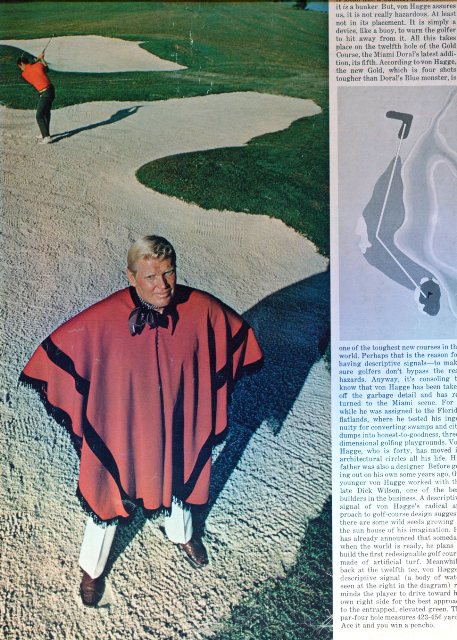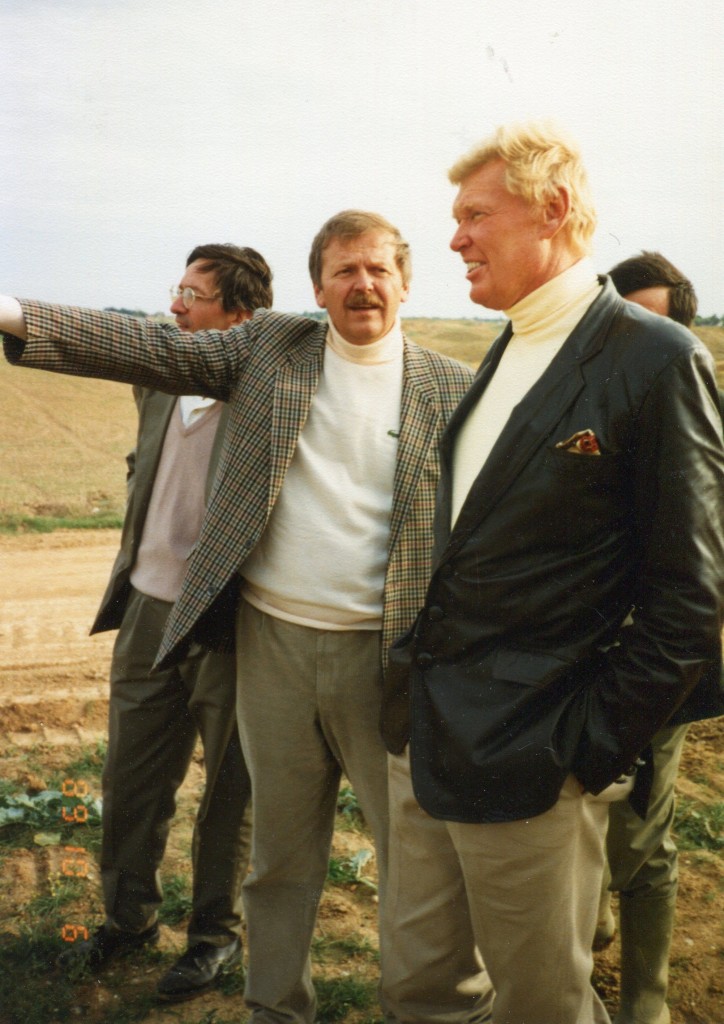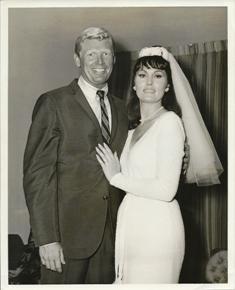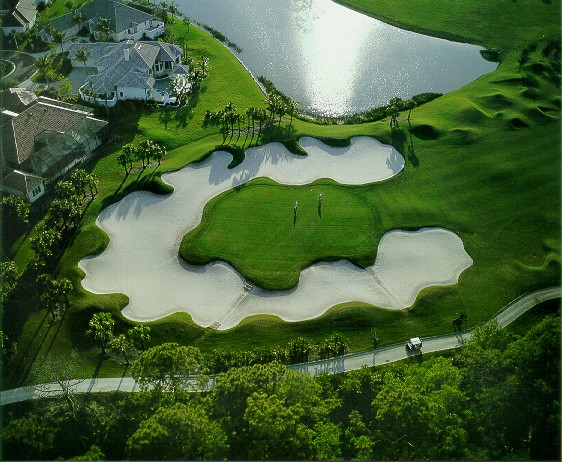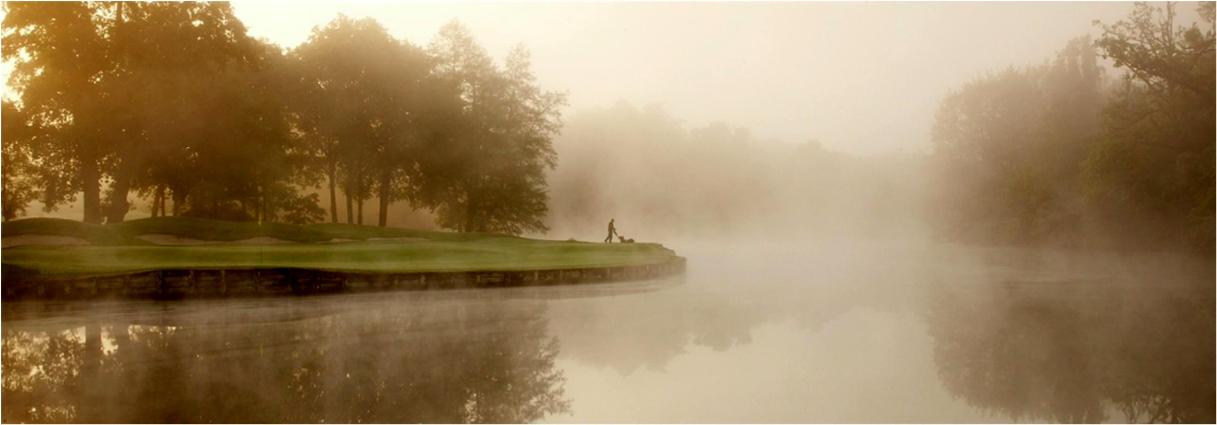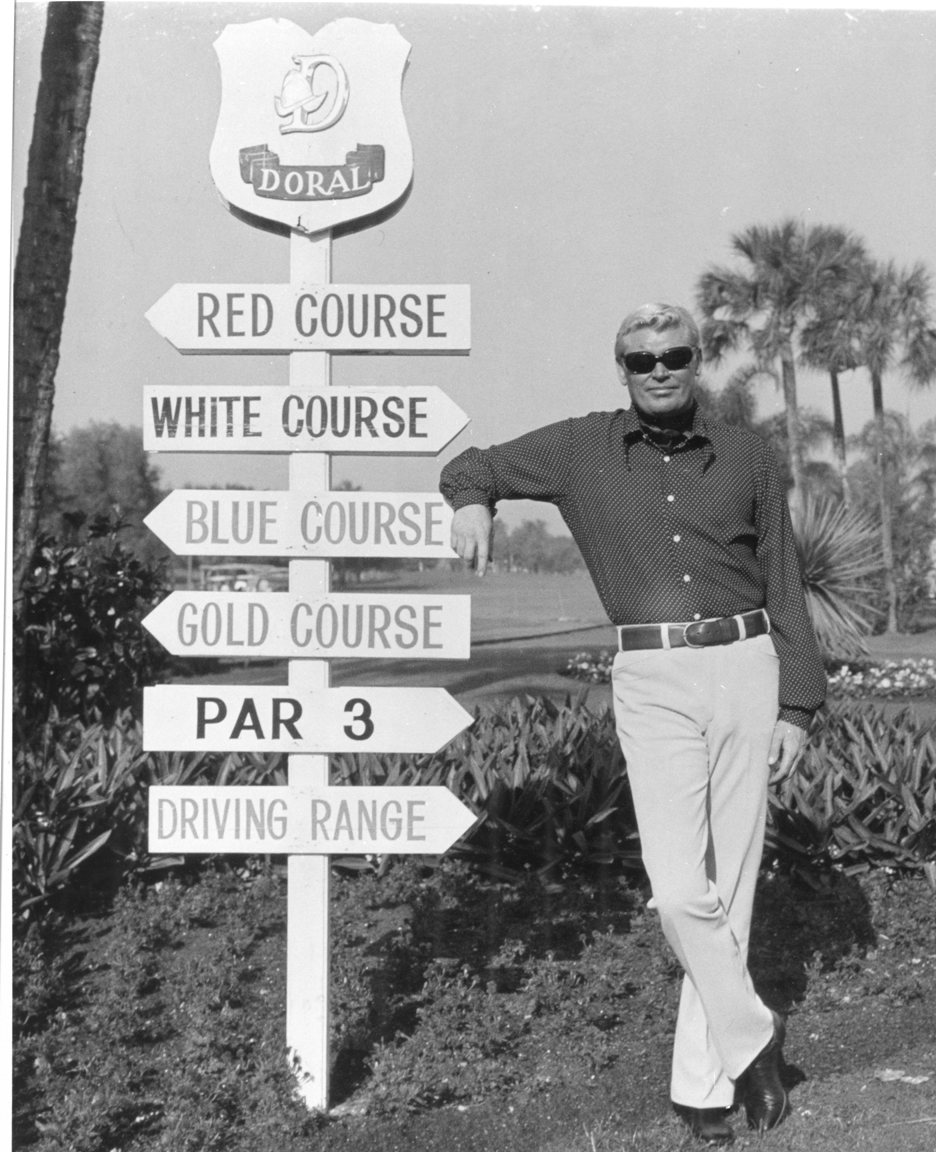 ROBERT VON HAGGE (1927-2010)
ROBERT VON HAGGE (1927-2010)
Robert von Hagge was literally born and raised on a golf course. For six years in the 1920’s, his father, Ben F. von Hagge, was associated with Donald Ross, the famous Scottish golf course architect. Ben then became a country club manager and developer of club facilities, in and around the Chicago area. He won the Chicago District Golf Association Top Turf award seven times in a period of fourteen years in which he competed, while simultaneously managing the various clubs with which he was then affiliated.
Before his 17th birthday, Robert von Hagge had worked as a caddy, a shop boy (cleaning and repairing golf clubs), a caddy master, a golf course maintenance crewman, an assistant greens superintendent, assistant golf professional, and as a commercial illustrator for sporting magazines. After graduating from high school, he entered Purdue University Agriculture School, and majored in landscape architecture. Additionally, he served in the United States Navy’s advanced V-12 O.C.S. program. While attending Purdue studying spatial planning and design, he subsidized his student income by freelancing as a commercial artist for outdoor magazines.
In 1955, Dick Wilson, one of America’s foremost golf course architects, employed him as an apprentice golf course designer. By 1959, Robert was being recognized within the profession as a principal designer with the Wilson firm. By the year’s end in 1962, he had been involved in all or part of the design of 40 golf courses in the U.S. and the Caribbean and four foreign countries. Late that same year he resigned his affiliation with the Dick Wilson Company in order to start his own firm.
Robert von Hagge created some of the world’s most outstanding and award-winning courses, and has been responsible for the design, redesign or partial design of over 250 golf courses in the U.S., Caribbean, and thirty foreign countries. In 1987, the firm began a campaign to aggressively pursue commissions in the emerging foreign markets. Today, von Hagge, Smelek and Baril are recognized by their competition as the pre-eminent force in most of the prime foreign markets.
Commentary:
“I have seen many Robert von Hagge courses, and each one you see is better than the last . So I did a little research on this great American designer , who died in September 2010 leaving more than 250 courses worldwide . For our private fortune, von Hagge, Mike Smelek and Rick Baril ( von Hagge collaborating with partners since 1980) has worked extensively in Spain . I have already mentioned the grand tours of Emporda Links and Forest, the two paths of the Royal Society Spanish Equestrian Country Club – North and South and the contorted course of El Encino along with their course in Miami, Crandon Golf .
Perhaps their most famous course is Les Bordes, France, the course consistently voted top 3 of all continental Europe famous for its difficulty ( the course record is 71, held by Jacquelin ) .
vHS&B footprint is also in Le Golf National, with the French designer Hubert Chesneau, and many other designs, including: White Witch in Jamaica, a Ritz Carlton resort , the Blue Moster Doral in Miami , El Conquistador in Puerto Rico or three Mexican jewelry : The Tiger in Puerto Vallarta, Isla Navidad near Manzanillo and Bosque Real in Mexico City.
Robert von Hagge has sometimes been described as a Renaissance man . Born in Texas, he was linked to golf since childhood, as a caddy , and caddy master , a member of the maintenance team and played professional golf on the PGA Tour. With tall and aristocratic bearing , he was a very charismatic person.
At 30 he worked as a club professional in the field of Catskill Mountains in New York. He accomplished one “curious achievement”, in the world of golf: He married ( and divorced ) sisters, who played the LPGA Tour: Alice and Marlene Bauer (the latter a Hall of Fame golf). He became a golf course architect after earning a degree at Purdue. He began working as an apprentice with Dick Wilson , a noted architect who had worked at Shinnecock Hills in the 30s, and later eventually succumbed to drinking.
In the late 60s, Robert married Greta (his wife for the rest of his life). Setting up office was not difficult for von Hagge . Besides his charisma and knowledge, he rode the wave of the housing market in Florida in the 60s to work in Boca Rio , a very private club, with a very wealthy membership roster; one of the richest in America. He was among the first designers to understand golf courses and property developments would go hand in hand, and educating developers to not overpopulate a course with houses .
Courses of von Hagge are progressive, never boring and are often very distinctive in character. They offer great variety in the game and strategy. von Hagge cut his design teeth in South Florida, where “moving dirt” was mandatory, if you expected to create any drama. This need to move earth would be so impactful on him, it would ultimately define his approach to golf course design.
Robert maintained each course must satisfy three different players : good golfers , medium and beginner. Each hole must tactically examine each category of player. He formulated a very specific design approach; “The 21-point examination”; providing a basis for all his designs. The 21-points encompass the requisite skills which all master golfers must possess. These “examinations” were included in each golf course. He maintained golf is played “in the air” – he placed a premium on the aerial game. He felt putting was a less important – less technical – skill.
Robert referred to “hazards” as descriptive signals. These elements are part of the “signage” employed by the architect to communicate the examination to the golfer. “They are not intended as penalties, but signage. If the golfer decides to challenge them or, if the golfer misinterprets the examination or executes a poor shot – they become hazards.” He was a proponent of placing these “descriptive signals” beyond the reach of the average golfer.
von Hagge, Smelek and Baril golf courses are picturesque ; von Hagge sought beauty in design as a fundamental objective. He was not so timid as to leave the landscape untouched. He was a proponent of “light and shadow” stating, “It is the only eternal constant.” He advocated studying the light and shadows at different times of day to understand the artistic effect it would have on the player . He advocated comprehensive examinations and aesthetic variety. He felt golfers were as interested in “beauty” as they were interested in the hitting the golf ball. He would say, “Great golf courses are beautiful golf courses. When you see a photograph of a golf course, it is usually taken early in the morning or late in the afternoon, when the sun is at a low angle and exhibiting dramatic light and shadow. Our job is to bring these times of ethereal light closer together, and extend this look throughout the day. This is accomplished by the way the golf course is routed and shaped.”
von Hagge held that golfer’s are only “playing golf” really about eleven minutes in a 4 hour round. “It is the responsibility of the designer to make 3+ hours a pleasant experience. The golfer should look around and say to himself, “How lucky I am to be able to play here.”
Bill Overdorf recollections of Bob Hagge and Doral “Blue Monster”:
“ In an old thread there was quite a bit of discussion about Dick Wilson, Joe Lee, Robert von Hagge and the design evolution of the (Doral) Blue Monster. Yes, Joe Lee was Wilson’s guy as was von Hagge (Bob Hagge in those days). At one point in time the door opened for a new name to attach to the project. Being in the employ of Mark Mahannah, I accompanied Mark to a meeting with Kaskell, et al in Miami Beach as he was being considered to complete the work at Doral. Mark had a distinct penchant for self destructive utterances such as “We ain’t got no …” which did not stand him in good stead with the executive level of those present. Needless to say, it was, at the very least an inopportune moment in time and he came away empty.
In another vein, I later had an opportunity to do some shaping at Doral for Leo Neal from Delray Beach who was trying to make his name as a golf course contractor. I still have in my possession a routing design for the Blue Monster that clearly identifies the architect as Bob Hagge, and a design for No.15 green sketched on the back of a Doral menu. This further demonstrates the myriad convolutions the golf course design industry has historically taken. Incidentally, you could not possibly believe the menu prices.”
